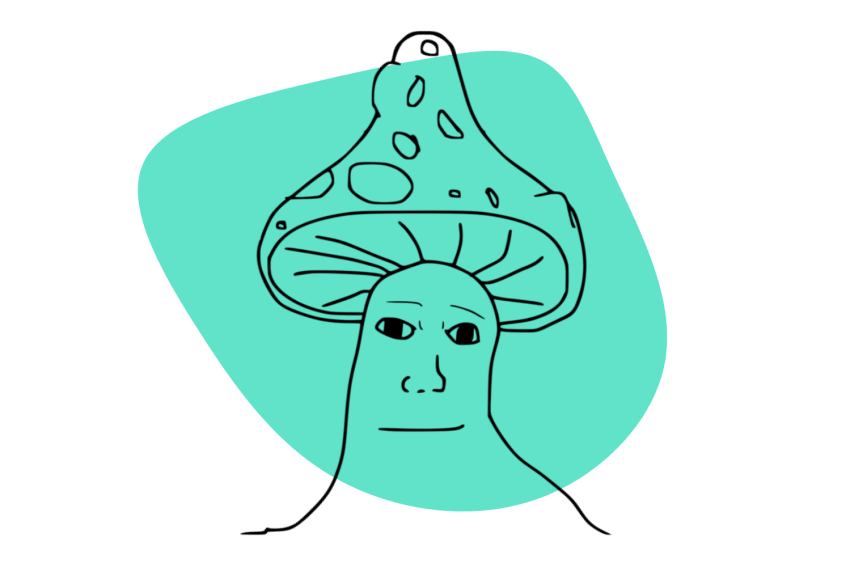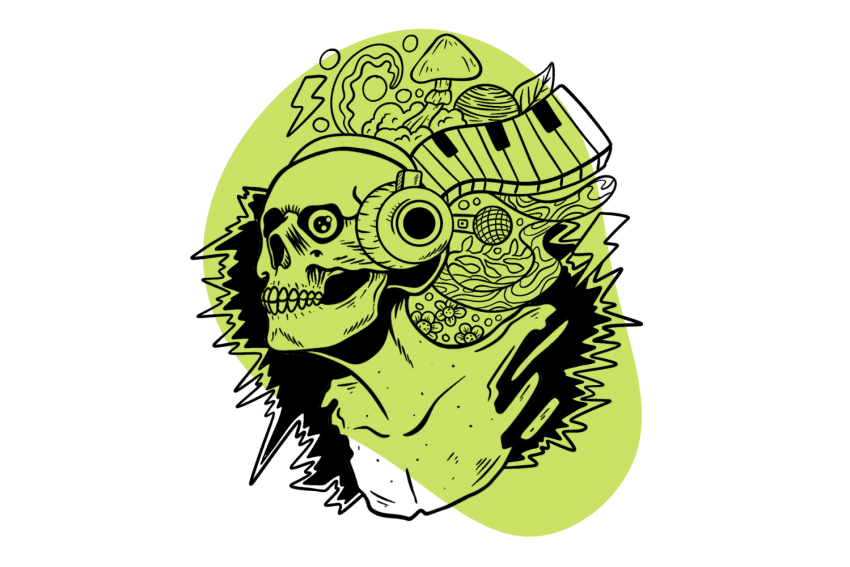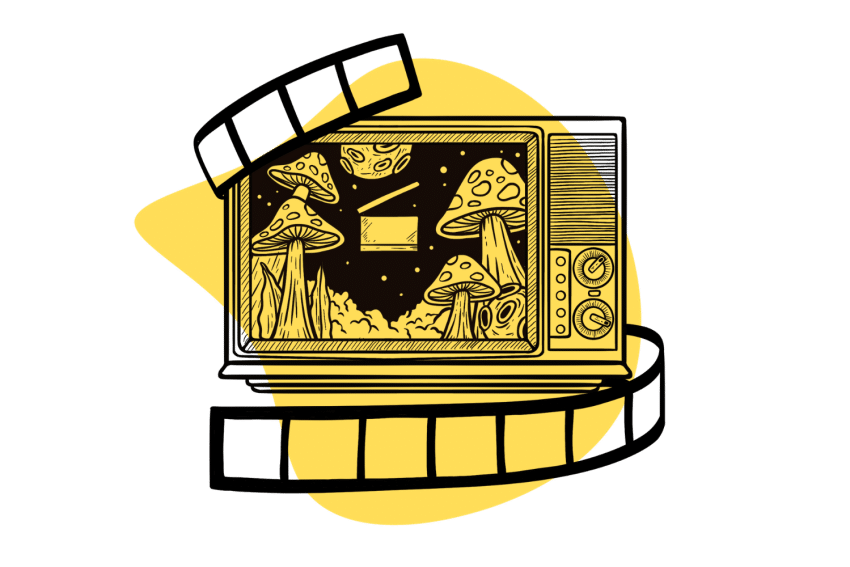The Stoned Ape Hypothesis: How Psychedelics Shaped Human Evolution
It’s a fun theory to think about, but it’s still just a theory.
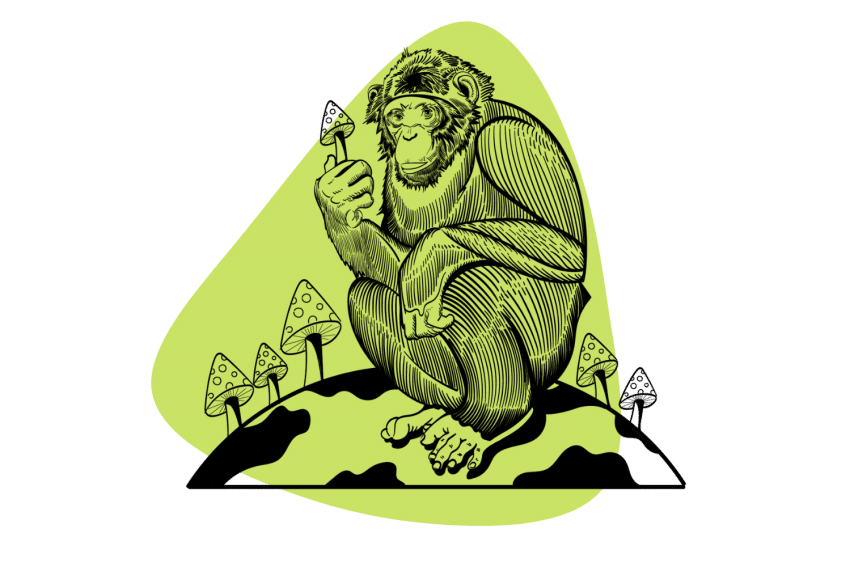
Did magic mushrooms play a role in human evolution?
The Stoned Ape Theory, or “The Psychedelic Ape Theory,” is a controversial hypothesis that suggests that psychoactive substances, specifically psychedelic mushrooms, influenced the trajectory of our prehistoric ancestors’ cognitive development.
The theory argues that early humans consumed mind-altering plants, which led to an increased capacity for creative thinking that allowed for the emergence of language, complex social bonds, and the development of societies and cultures.
As exciting as this sounds, the Stoned Ape Theory is an unproven hypothesis, met with skepticism in the scientific community, as there isn’t enough evidence to hold up this theory.
Despite the lack of evidence, the idea that our early human ancestors became smarter by eating shrooms is a fascinating topic.
Let’s explore arguments for and against the Stoned Ape Theory in this article.
Human Evolution 101
One of my favorite reads on the fascinating story of human evolution is Yuval Noah Harari’s book, Sapiens.
In this book, Harari discusses how our species, Homo sapiens, has evolved and adapted over the span of millennia to dominate the planet in a way that no other species has. And it’s all thanks to our ability to imagine and create things that do not exist in the material world, such as tools, religion, nations, laws, and money.
These concepts have shaped human history and continue to influence humans in the modern world today.
So, how did we get here?
The Sahelanthropus tchadensis is believed to be the earliest known hominid group and a possible ancestor of chimpanzees and humans that lived around 7 million years ago. These early hominids had ape-like and human-like features, leading scientists to believe that Sahelanthropus is a transitional species between apes and humans [1].
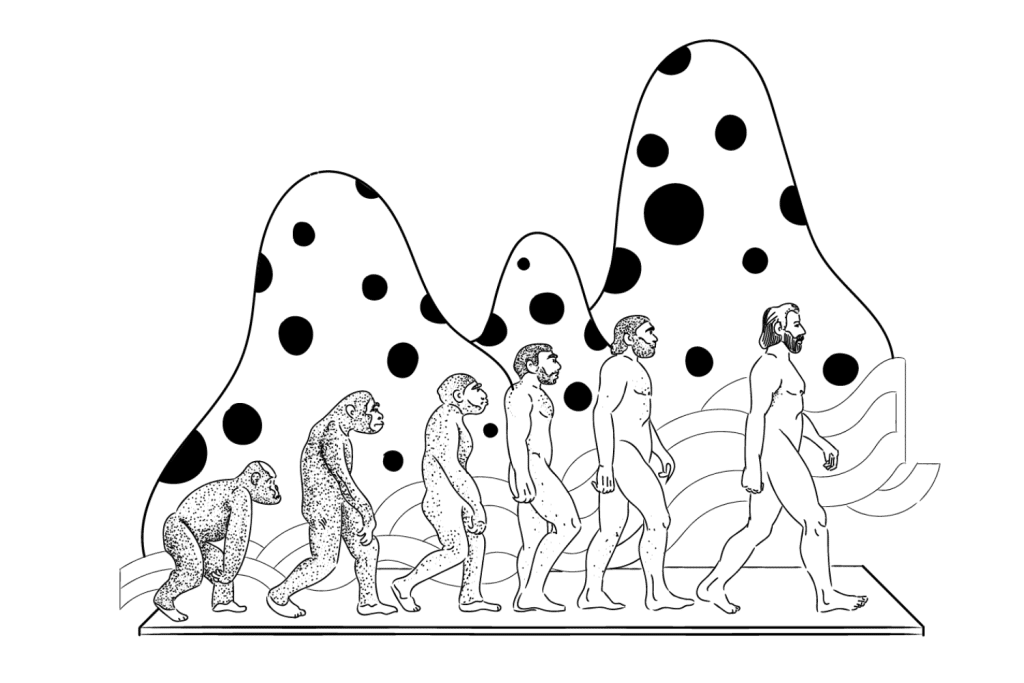
Fast forward to 2 million years ago, and the Homo genus emerges.
This group includes the Homo habilis, which is believed to be the first humans to make and use tools. Another unique feature of Homo habilis is its brain size, which was larger than earlier hominids but still smaller than modern humans.
This suggests that Homo habilis had a more advanced cognitive ability than its predecessors, but it was not as advanced as modern humans [2].
The first humans to control fire?
That would be the Homo erectus, which appeared 1.8 million years ago.
These archaic humans had even larger brains, which helped them develop more complex social bonds, making them much better at adapting to different environments.
Subsequently, Homo erectus is believed to be the first human species to leave Africa and migrate to other parts of the world [3].
Homo sapiens came onto the scene about 300,000 years ago. Homo sapiens sapiens — also known as the modern humans — would eventually emerge as the only surviving subspecies of this group.
Compared to our earlier ancestors, our early Homo sapien relatives had significantly larger brains (1300–1500 cubic centimeters), a much more advanced nervous system, and a lighter postcranial skeleton that allowed for a long and lean body proportion for tropical environments [4].
As human ancestors evolved and spread across the globe, they also developed many cultural adaptations. Cultural adaptations refer to the changes in behavior that are learned through social interactions and responses to the environment. Significant cultural adaptations include tool-making, language, farming, and cooking.
These cultural adaptations allowed early humans to adapt to a wide variety of environments and to survive in changing conditions.
What scientists find baffling is that the human brain tripled in size (relative to body size) in just two million years. There are several theories for how this happened, and one of those is, of course, the subject of this article.
The Stoned Ape Hypothesis
American ethnobotanist and philosopher Terence McKenna first proposed the Stoned Ape Hypothesis in his book, Food of the Gods: The Search for the Original Tree of Knowledge (1992) as an answer to “How did the human brain triple in size within two million years?”
According to Mckenna, we have magic mushrooms to thank for “[bringing humans] out of the animal mind and into the world of articulated speech and imagination” [5].
McKenna’s wild theory suggested that our early Homo sapien ancestors’ brain development was accelerated through the consumption of psychoactive mushrooms, particularly psilocybin mushrooms, which led to the capacity for higher consciousness.
It’s also worth mentioning that the human brain hasn’t continued to increase in size over the past few thousand years. The size has remained relatively constant for the last 35,000 years or so.
Mckenna’s ideas have inspired further discussions on the topic of psychedelics being responsible for expanding human consciousness.
Many indigenous cultures worldwide have used psychoactive substances to alter consciousness as part of medicine and ritual for centuries, which could reinforce the possibility that our prehistoric ancestors started this practice.
Arguments For the Stoned Ape Theory
As much as we love the idea that magic mushrooms are responsible for enlightening early human brains, there’s no scientific evidence to prove psychoactive substances directly impact the evolution of human consciousness.
Most arguments are purely speculative, as there’s no way for scientists to test these theories.
1. The Use Of Psychoactive Substances For Plant Medicine & Ritual
In support of the Stoned Ape Theory, some anthropologists point out the use of psychoactive substances, such as psilocybin, opium, ayahuasca, Amanita muscaria, and peyote, which have been used in many cultures for centuries in religious rituals and traditional medicine.
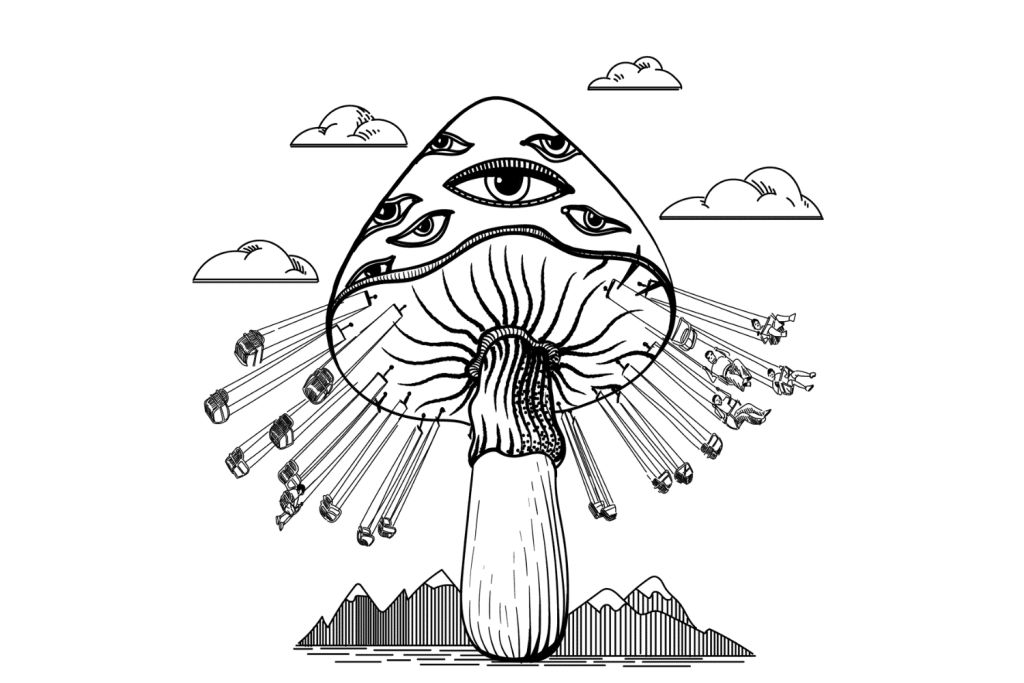
Stoned Ape Hypothesis supporters argue that it’s possible that these very practices could have been passed down from our ancient relatives.
2. Early Human Artistic Expression
In his book Food of the Gods, Mckenna argued that altered states of consciousness inspired early cave paintings.
Motifs of geometric patterns are common in prehistoric art worldwide, reminiscent of the fractal patterns seen in visual hallucinations under the influence of psychedelic drugs.
However, the purpose of early human art is not always clear, and there are many different interpretations.
Some researchers argue that early human art was primarily functional, serving as a means of communication or as a tool for hunting, warnings, or other practical tasks.
Others suggest that it was more symbolic or expressive, expressing identity, belief, or emotion — but there’s no definitive link to the use of mind-altering substances in creating these early artworks.
Criticisms Of the Stoned Ape Theory
The biggest critique of Mckenna’s theory is that it’s based on untestable assumptions and lacks peer-reviewed research.
The evolution of human consciousness is a complex and multifaceted process influenced by various factors, including genetics, environment, and culture.
Critics emphasize that Mckenna’s hypothesis, although entertaining, oversimplifies the complicated nature of evolution and overlooks the wide range of factors that may have contributed to human cultural evolution.
Further Discussion On the Stoned Ape Theory
Has this Stoned Ape Hypothesis captured your imagination as it has so many others?
Jump into the rabbit hole with these additional sources to feed your curiosity.
Though the image of our stone-age ancestors forming an advanced consciousness that would shape the face of the planet through magic mushrooms is a fun and fascinating topic, we encourage you to keep in mind that Mckenna’s Stoned Ape Theory is highly speculative.
Terence Mckenna’s Website
You can find more information about the stoned ape hypothesis and many other theories and ideas on Mckenna’s website.
Food of the Gods: The Search for the Original Tree of Knowledge A Radical History of Plants, Drugs, and Human Evolution

Go straight to the source and read where Mckenna first posited his arguments for the Stoned Ape Theory in his 1992 book, Food of the Gods.
The book explores the history of psychoactive substances and their role within human culture and spiritual practices — a quintessential book in the library of psychonauts.
The Stoned Ape Subreddit
Reddit is an excellent space to nerd out with a community about subjects like this one. This subreddit is a forum for discussing the Stoned Ape Theory and other related topics.
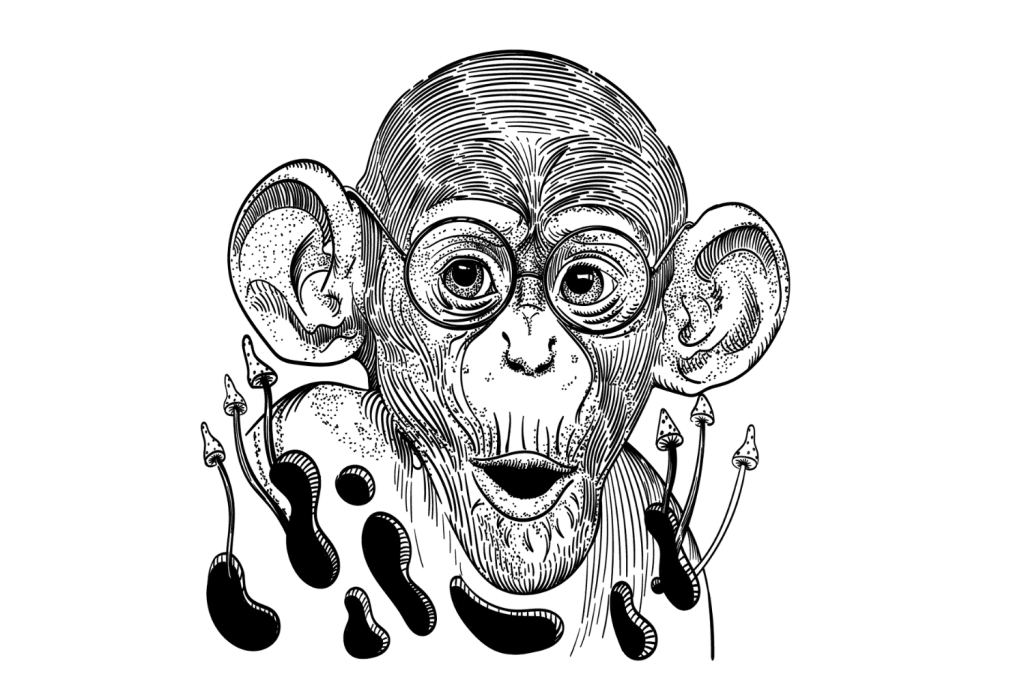
Final Thoughts On the Stoned Ape Hypothesis
When we think about what makes us human — our intelligence, use of tools, culture, and society — it’s fun to speculate about how and why we developed the way we have
Terence Mckenna’s Stoned Ape Hypothesis is an intriguing story of early humans consuming mind-altering psychedelic mushrooms to shape the evolutionary development of people and culture.
While it’s definitely an interesting idea, remember that it’s not supported by scientific evidence, and it overlooks many factors at play in human evolution.
References
- Emonet, E. G., Andossa, L., Taïsso Mackaye, H., & Brunet, M. (2014). Subocclusal dental morphology of Sahelanthropus tchadensis and the evolution of teeth in hominins. American Journal of Physical Anthropology, 153(1), 116-123.
- Tobias, P. V. (1987). The brain of Homo habilis: A new level of organization in cerebral evolution. Journal of Human Evolution, 16(7-8), 741-761.
- Antón, S. C. (2003). Natural history of Homo erectus. American Journal of Physical Anthropology: The Official Publication of the American Association of Physical Anthropologists, 122(S37), 126-170.
- Geher, G., Camargo, M. A., & O’Rourke, S. D. (2007). Mating intelligence: An integrative model and future research directions. In Mating Intelligence (pp. 421-450). Psychology Press.
- McKenna, T. K. (2021). Food of the gods: The search for the original tree of knowledge: A radical history of plants, drugs, and human evolution. Penguin Random House.

